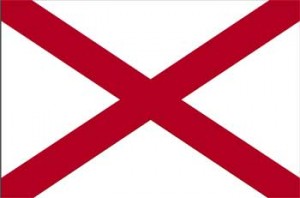Alabama Emergency Vehicle Light State Statutes
 States in the U.S. are governed by laws and statutes which regulate how emergency vehicle lights operate within a specific state. The state of Alabama is no exception. The Code of Alabama enforces specified codes on all emergency vehicles operating within the state. Each emergency vehicle must adhere to the regulations outlined, as specified for each type of vehicle, concerning the use of visible emergency vehicle lighting and audible signals. The vehicles listed below must adhere to the guidelines as contained in Alabama state statutes 32-1-1(3) and 32-5A-115(C).
States in the U.S. are governed by laws and statutes which regulate how emergency vehicle lights operate within a specific state. The state of Alabama is no exception. The Code of Alabama enforces specified codes on all emergency vehicles operating within the state. Each emergency vehicle must adhere to the regulations outlined, as specified for each type of vehicle, concerning the use of visible emergency vehicle lighting and audible signals. The vehicles listed below must adhere to the guidelines as contained in Alabama state statutes 32-1-1(3) and 32-5A-115(C).
Police Lights
All police emergency vehicles must be equipped with at least one colored light which must be made visible under normal day/night conditions from a distance of 500 feet. This police light must be red or blue in color. It must also be equipped with a siren, exhaust whistle, or bell capable of sounding an audible signal which must be approved by the Director of Public Safety. No vehicle other than a police vehicle is allowed to exhibit a blue light.
Fire Trucks Lights
Department fire trucks used for emergency calls must display at least one visible red colored light which must be made visible under normal day/night conditions from a distance of 500 feet. These vehicles must be equipped with sirens, bells, horns or other electronic siren devices that have been approved by the Director of Public Safety. These vehicles are not allowed to display blue lights as allowed by police emergency vehicles.
Volunteer Firefighter Lights
Volunteer fire trucks, publicly or privately owned, must be designated by the Director of Public Safety or the chief of police of an incorporated city. These vehicles may operate as authorized emergency vehicles. These vehicles must display at least one red colored light which must be made visible under normal day/night conditions from a distance of 500 feet. These volunteer fire trucks must adhere to the same guidelines as city and state fire patrol emergency vehicles. They must be equipped with sirens, bells, horns, or other electronic siren devices that have been approved by the Director of Public Safety. These vehicles are not allowed to display blue lights as allowed by police emergency vehicles.
Ambulance Lights
All publicly or privately owned ambulance vehicles used for emergency calls must display at least one visible red colored light which must be made visible under normal day/night conditions from a distance of 500 feet. These vehicles must be equipped with a siren, bell, horn or another electronic siren device that has been approved by the Director of Public Safety. These vehicles are not allowed to display blue lights as allowed by police emergency vehicles.
Tow Truck Lights
All tow trucks, publicly or privately owned, as designated by the Director of Public Safety or the chief of police of an incorporated city may operate as authorized emergency vehicles. These authorized emergency vehicles must be equipped with at least one amber or yellow visible light made visible from a distance of 500 feet under normal day/night conditions. This light serves as a warning or caution light. These vehicles are not required to be equipped with sirens or other audio signaling devices. Unlike police, fire or ambulance emergency vehicles, other vehicles are not required to yield the right-of-way to emergency vehicles displaying these warning lights.
Construction Vehicle Lights
 All construction vehicles, publicly or privately owned, as designated by the Director of Public Safety or the chief of police of an incorporated city may operate as authorized emergency vehicles. These emergency vehicles must be equipped with at least one amber or yellow light made visible from a distance of 500 feet under normal day/night conditions. This light shall serve as a warning or caution light. These vehicles are not required to be equipped with sirens or other audio signaling devices. Unlike police, fire or ambulance emergency vehicles, other vehicles are not required to yield the right-of-way to emergency vehicles displaying these warning lights.
All construction vehicles, publicly or privately owned, as designated by the Director of Public Safety or the chief of police of an incorporated city may operate as authorized emergency vehicles. These emergency vehicles must be equipped with at least one amber or yellow light made visible from a distance of 500 feet under normal day/night conditions. This light shall serve as a warning or caution light. These vehicles are not required to be equipped with sirens or other audio signaling devices. Unlike police, fire or ambulance emergency vehicles, other vehicles are not required to yield the right-of-way to emergency vehicles displaying these warning lights.
Utility Vehicle Lights
Publicly or privately owned utility vehicles must be designated as authorized emergency vehicles by the Director of Public Safety or the chief of police of an incorporated city. These emergency vehicles must be equipped with at least one amber or yellow light made visible from a distance of 500 feet under normal day/night conditions. This strobe light will serve as a warning or caution light. These vehicles are not required to be equipped with sirens or other audio signaling devices. Unlike police, fire or ambulance emergency vehicles, other vehicles are not required to yield the right-of-way to emergency vehicles displaying these warning lights.
Pilot Vehicle Lights
Publicly or privately owned vehicles operating pilot vehicle lights, lights used by vehicles escorting transport vehicles with oversize loads, must be designated as authorized emergency vehicles by the Director of Public Safety or the chief of police of an incorporated city. These emergency vehicles must be equipped with at least one amber or yellow light made visible from a distance of 500 feet under normal day/night conditions. This light will serve as a warning or caution light. These vehicles are not required to be equipped with sirens or other audio signaling devices. Unlike police, fire or ambulance emergency vehicles, other vehicles are not required to yield the right-of-way to emergency vehicles displaying these warning lights.
Security Vehicle Lights
Publicly or privately owned vehicles operating security vehicle lights, lights used by vehicles providing security in public or private areas, must be designated as authorized emergency vehicles by the Director of Public Safety or the chief of police of an incorporated city. These emergency vehicles must be equipped with at least one amber or yellow light made visible from a distance of 500 feet under normal day/night conditions. This light serves as a warning or caution light. These vehicles are not required to be equipped with sirens or other audio signaling devices. Unlike police, fire or ambulance emergency vehicles, other vehicles are not required to yield the right-of-way to emergency vehicles displaying these warning lights.
For more information about what lights may be available to you, we suggest calling your State Highway Patrol office at: 614- 466-2660
*Please note that the above contact information is what we are currently able to find and the numbers may have changed since this listing.
Disclaimer: The emergency vehicle light state statute guide was created by Extreme Tactical Dynamics as a guide and reference. We make no claim to the accuracy or validity of this guide. This guide was written to the best of our knowledge and has been provided to our customers as a courtesy ONLY! The information in this guide is our interpretation of the law as we have read it. We cannot be held responsible for any errors as this is only our interpretation of the law and the laws are constantly changing. We cannot be held liable or responsible for any errors and recommend that our customers refer to their local authorities to confirm the particular statue that governs their use of emergency vehicle lights.
 Facebook
Twitter
Google+
Instagram
YouTube
Facebook
Twitter
Google+
Instagram
YouTube


